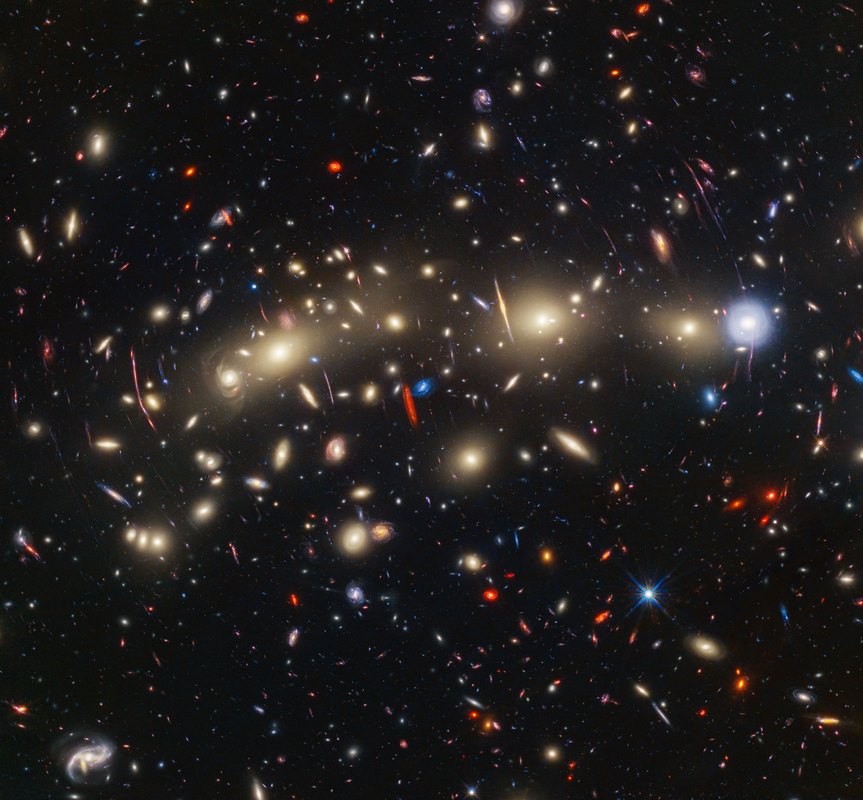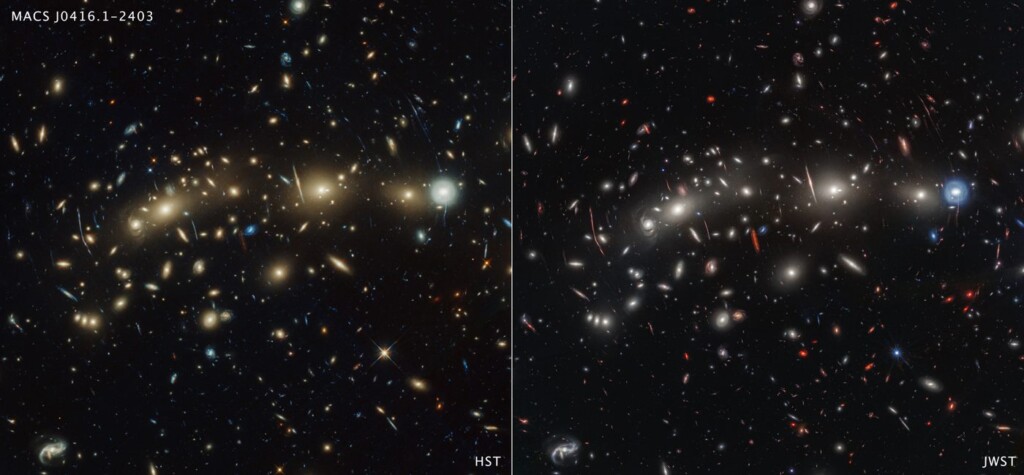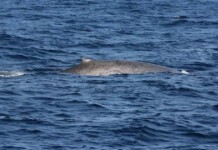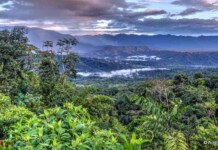
In a tour de force of techno-stargazing, NASA trained both the Hubble and James Webb space telescopes on the same patch of galaxies to create an unprecedented view of the universe.
The resulting panchromatic image combines visible and infrared light of the galaxy cluster MACS0416—4.3 billion light-years from Earth.
It includes a bounty of galaxies outside the cluster and a sprinkling of sources that vary over time, likely due to gravitational lensing, the distortion and amplification of light from distant background sources.
To make the image, in general the shortest wavelengths of light were color-coded blue, the longest wavelengths red, and intermediate wavelengths green. The broad range of wavelengths, from 0.4 to 5 microns, yields a particularly vivid landscape of galaxies, NASA explains on its website.
Those colors give clues to galaxy distances. The bluest galaxies are relatively nearby and often show intense star formation, as best detected by Hubble, while the redder galaxies tend to be more distant as detected by Webb. Some galaxies also appear very red because they contain copious amounts of cosmic dust that tends to absorb bluer colors of starlight.
MORE STORIES LIKE THIS: X-rays and Webb Telescope Provide Dazzling Views of Space Invisible to the Unaided Eye
MACS0416 is actually two galaxy clusters that are slowly colliding, and one day when our bones have long turned to dust they will merge to become a single entity. Studying it with both telescopes therefore is like a two-for-one deal, and of particular interest to the team snapping this photo were “transients,” or objects that vary significantly in light signal over the observation period.

They identified 14 such transients across the field of view. Twelve of those transients were located in three galaxies that are highly magnified by gravitational lensing, and are likely to be individual stars or multiple-star systems that are briefly very highly magnified. The remaining two transients are within more moderately magnified background galaxies and are likely to be supernovae.
“We’re calling MACS0416 the Christmas Tree Galaxy Cluster, both because it’s so colorful and because of these flickering lights we find within it. We can see transients everywhere,” said Haojing Yan of the University of Missouri in Columbia, lead author of one paper describing the scientific results.
PREVIOUS WEBB RESULTS: NASA Celebrates ‘One Year of Science’ From Webb Telescope with Jaw-Dropping Image
One transient in particular was named “Mothra” after a giant monster from the Godzilla universe. In the photo it is gravitationally lensed about 4,000 times, suggesting to the team that there is likely another object in the foreground they can’t see.
SHARE This Triumphant Image With Your Friends In Need Of A Desktop Background…



















